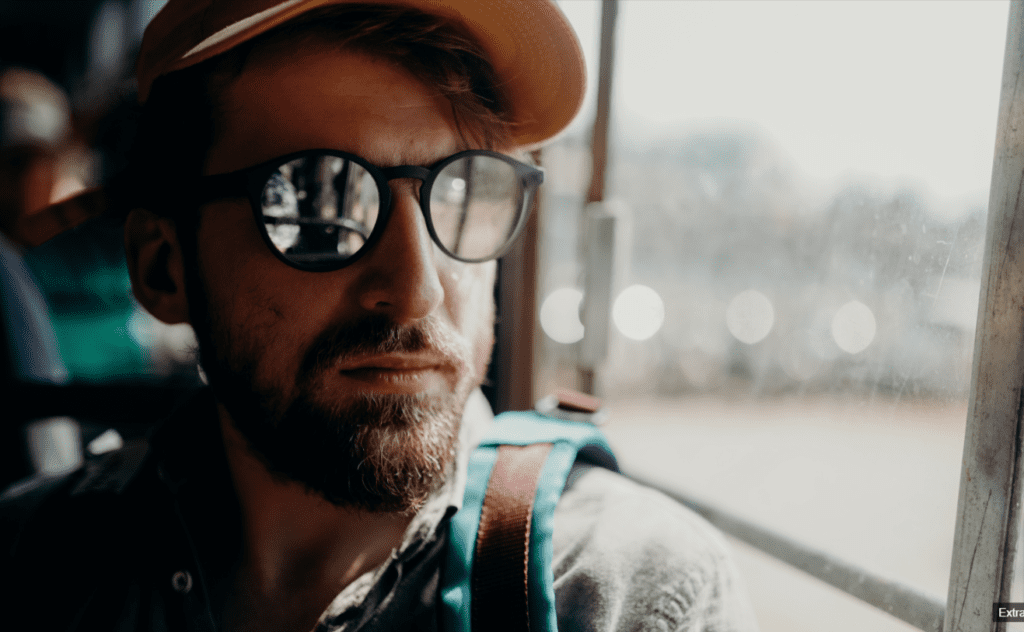A day bus trip guarantees incredible sights, sounds, adventure, and convenience. However, while exploring Canada via bus can be an amazing experience, it’s always best to plan ahead for comfort and safety.
Our previous article emphasized the importance of creating a bus travel checklist. These items, from personal essentials to eco-friendly considerations, help ensure a smoother and more enjoyable travel experience.
In particular, we highlighted how sunscreen and a pair of sunglasses can help protect your eyes from the dangers of UV (ultraviolet) rays. But why is this so important?
It’s common knowledge that excessive exposure to UV rays can harm your skin, causing sunburn, skin aging, or skin cancer. However, you may not be aware that UV exposure can also cause temporary to permanent damage to your eyes! The Government of Canada stresses that the UV Index in Canada can be three or higher between 11 a.m. and 3 p.m. from April to September. Individuals of every skin type — whether skin type I, which is often found in people with blue eyes, or skin type V, which is typical of individuals with darker skin and eyes — must therefore take extra precautions to avoid eye cataracts and other eye complications from the sun.
Using sunscreen and sunglasses is only the tip of the iceberg when securing your eye health on a day bus trip. Below, let’s dive into the details of eye protection and why it matters so much.
Sunglasses and eyewear

Wearing sunglasses is your eyes’ first line of defence against UV rays. However, not all sunglasses are created equally.
Some sunglasses are purely decorative, with dark lenses that actually do nothing to block out UV rays. When shopping for glasses at an optical or drug store, you need to look for a sticker or tag indicating UV protection. Dr. Danielle Gordon from Sphere Optometry explains that these indicators can vary — they may highlight 100% UV-blocking capabilities or list the nanometres of the wavelength beyond which they block — so you’ll need to do a little research before buying.
Otherwise, you can improve your sunglasses experience by focusing on specific lens features. For instance, while polarized lenses don’t offer any additional UV protection, they can reduce the glare coming off the roads and snow or water. This can be helpful while enjoying the balmy weather at Toronto Islands or sightseeing along Niagara Falls. Meanwhile, tinted lenses can be great while enjoying green scenery at Mont-Royal or the Montreal Botanical Garden because they increase contrast and the vibrancy of colours, thus reducing the strain on your eyes.
Besides the finish of your lenses, the style of your frames is a crucial aspect of design that you can personalize for optimal sun protection. The skin around our eyes is delicate, and smaller sunglasses frames may not be able to block the reflection from the sun’s rays. Thus, consider sunglasses with larger frames. A convenient way to do so is by shopping online and selecting among the catalogue filters for frame size. This will automatically limit your selection to stylish yet functional designs that effectively shield your eyes and face. For starters, consider the following types of frames below:
Aviator frames: Popularized by iconic brands like Ray-Ban, aviator sunglasses feature large lenses with extensive coverage. The timeless design of these frames will go with any outfit you pack along as well.
Sport-specific frames: Designs such as Sutro or Hydra from Oakley were originally designed for cyclists and athletes. This is precisely why the eyewear is sure to block out any excessive elements — whether it’s the wind, debris, or the sun.
Wraparound frames: These sunglasses provide superior coverage by wrapping around your face and preventing UV rays from entering through the sides. Guaranteed brands that offer this style include Wiley X and Smith.
Hats and headwear

Sunglasses, like hats and headwear, are crucial in safeguarding your eyes during a day bus trip. But they are also not built equally! The Canadian Skin Cancer Foundation explains that sun protection clothing comes with a UPF rating, which indicates how much UV radiation can penetrate a fabric. A UPF 50+ hat, for instance, would thus allow only 1/50th of the sun’s UV rays to penetrate the material, blocking at least 98% of UV rays.
You can shop on the websites of brands such as Sunday Afternoons and Coolibar or explore Amazon or even at your local Walmarts. There are several brands that specialize in UPF-rated hats of dense and tighter weaves that combine style with exceptional sun protection. Otherwise, here are some considerations when choosing your preferred design:
Wide-brimmed hats: Sun and bucket hats have wide brims that shield your face, neck, and ears from UV rays. However, you might want to ensure that these are made of soft, pliable material such as straw or cotton so that you can comfortably wear the hat while leaning against the headrest of your seat.
Visors: Visors are hats without a crown. While they leave the top of your head exposed, they have a brim that extends forward to offer shade to your face. These can be an excellent choice for your day bus trip when you want to keep your head cool while still protecting your face from the sun.
Baseball caps: Baseball caps offer minimal shade for your face, but they’re better than no headwear at all. Just make sure to look at the UPF ratings for your hat of choice for added sun protection.
Miscellaneous gear

While wearing sunglasses and headgear helps, you should still remember to apply sunscreen to any exposed skin. You’ll be spending long hours both on and off the bus, so covering all your bases is essential.
Choose products with an SPF of at least 50, such as the Neutrogena Clear Face Sunscreen or the La Roche-Posay Body and Face Sunscreen, which Dr. Benjamin Barankin from the Toronto Dermatology Centre recommends. Your sunscreen should be reapplied every three to four hours or more if your day bus trip will be touring Alberta or Ottawa, which are known to be among Canada’s sunniest locations.
Otherwise, consider packing lubricating eye drops to keep your eyes refreshed from the outside and a full jug of water to hydrate your eyes from the inside. Lastly, use the bus curtains during peak sun hours to reduce exposure to direct sun. You can also check and ensure your service provider offers window tints among their fleets. Most of the country allows any tint darkness in the back side windows and rear windshield, and many newer factory-made vehicles already come with tinted windows with a 30% light transmission block.
With these tips, you can fully enjoy Canada’s scenic beauty while preserving the health of your eyes. Book your trip with us today at TourExpress, and we can guarantee an adventure that’s not only exciting — but comfortable and safe at the same time.







